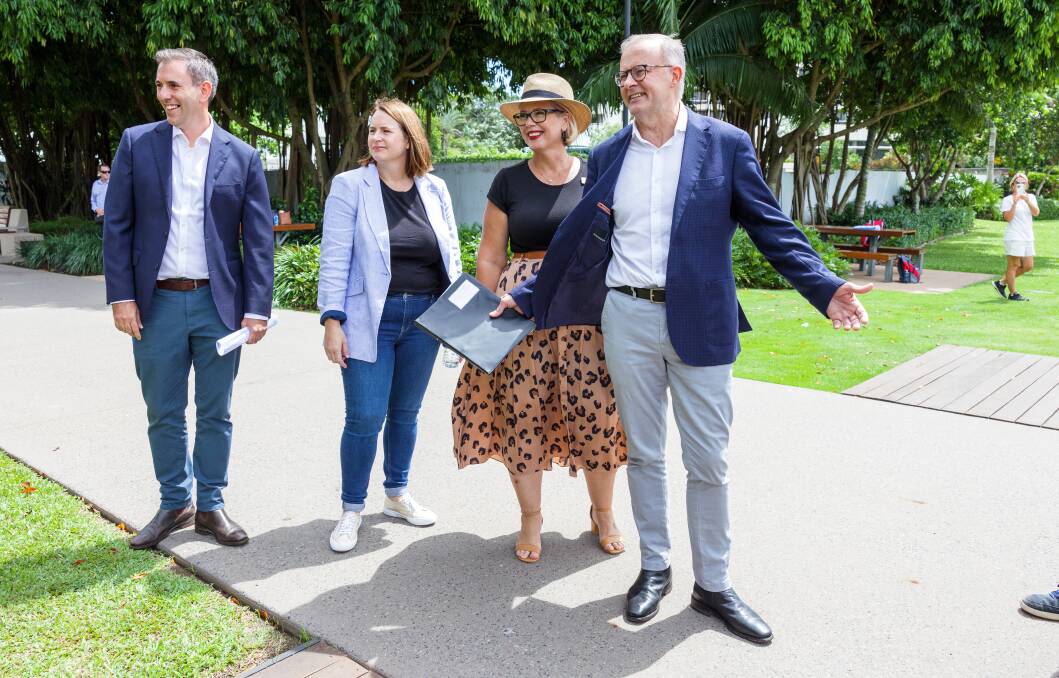
In election campaigns everything is exaggerated all the time (including this).
It is an unreliable theatre in which claims of competence and selfless community service are dispatched like confetti.
Bombarded with bombast, voters filter this cacophony picking the candidates who legitimise their grievance, address their fear, or reinforce their particular world view.
Some voters of course scour the detail, but most probably end up going on the vibe.
If this wasn't essentially true, then Clive Palmer's $83 million advertising blitz in 2019 would not have occurred. Nor would he be spending more this time to pervert the course of democracy.
Astoundingly, some voters believed his death taxes claims in 2019 and will probably buy his populist piffle of a fixed 3 per cent interest rate this time around.
That a vulgar billionaire spruiking arrant falsehoods can financially distort another election shows how easily our democratic architecture can be debauched. And social media has only deepened these polarising tendencies with its risible self-regulation, its incivility, and its snaky algorithms. Believing what we want to believe has opened commercial and political markets, inviting others to pander to such falsity, curating boutique realities of "alternative facts".
Political parties are human too and are thus prone to take on board the most agreeable inputs.
Coming so close to a federal election, SA Labor's success in unseating a competent, inoffensive first-term government last month has tempted federal Labor to think it has the zeitgeist on its side. The more so because Scott Morrison's three-term government is neither new nor inoffensive.
This points to another input from which Labor has taken heart - Morrison's horror run-up to this election.
A succession of scandals, mostly centring on Morrison's trustworthiness and emanating from his own colleagues, seemed to suggest that he was cooked - that the internecine warfare inside the NSW Division of the Liberal Party has already ruined any chance of a Morrison majority.
We shall see but what is plain now is that the long-telegraphed start of the election last Sunday magically reconfigured the election from Labor's hoped-for referendum on Morrison's pointless government to more of a head-to-head race between the incumbent PM and his challenger.
Equally clear is that despite the delayed start as Morrison searched for clean air, it was Labor who looked the more surprised by the pace of the game once the opening whistle was blown.
Suddenly, Labor resembled fourth division Scunthorpe United, who having somehow made it to the FA Cup final, faces Chelsea and has gone an own-goal down in the first furious minute of play.
That own-goal was Albanese's hesitation on the jobless rate - a number prominent in the Budget two weeks ago and therefore central to the Coalition charge that he is a risk to growth having not held an economic portfolio.
While media haters fumed at journalists for "gotcha" questions, the simple fact is that not commanding such economic minutiae in this very specific context was an entirely knowable risk for team Labor.
The incident itself will fade but the deeper problem for Labor was that it seemed flat-footed on day one when it should have been pushing forward aggressively, seizing the initiative.
This was still obvious three days later when, line astern, the two leaders respectively held their daily press conferences, both broadcast live on national TV from the campaign trail.
The difference in tone and pace was stark when broadcasters switched from Albanese in the Hunter Valley (slow and cautious) to Morrison in northern Tasmania (upbeat, assertive, message-driven).
And yet it was Morrison who was under the greater pressure over his mystifying refusal to commit to an anti-corruption body, nor even to admit that he had flagrantly broken a 2019 election promise to create one.
It was a clear Morrison error, but you wouldn't know it from the atmospherics.
Labor's strategy of running quiet through the pandemic and ditching controversial 2019 policies has streamlined its rise but also left it with more to do in the campaign itself if it wants to sway undecided voters to its column.
Who is Albanese? Where was his campaign gear change? What is Labor's vision for Australia?
Complaining about short-term budget bribes you've just waved into law simply leaves voters confused. And bored.
Questions abound. Who is Albanese? Where was his campaign gear change? What is Labor's vision for Australia? How would Albanese run the economy fast but fairly?
The week also saw Labor park the republican cause and bench its 2019 plans to increase the parsimonious dole ($46-a-day) despite the fact that fixing this inequity would have been perfectly contiguous with Albanese's own story of growing up in a council flat with a single mum on the invalid pension.
MORE MARK KENNY:
If ever there was a way of rendering in policy values, his lightly drawn image with voters, it was by fixing this yawing disadvantage.
Like our fictional Scunthorpe scenario above, Albanese has played it masterfully to reach the final in good shape. But the election is a new game. The jobless rate gaffe and the vacuum into which it fell highlights the need to step up to this new fast-paced level of competition. Labor must outline a bold unifying narrative for 21st-century Australia - a captivating alternative vision on women, climate, integrity and democratic renewal, the republic, the jobless, cultural policy, education, health, housing, foreign policy, and the economy.
All of this may be coming but after a bad week, Labor can no longer afford to play it safe nor leave exciting policy initiatives to the last fortnight of campaigning. It needs every day of the remaining five weeks to embed its plans into the minds of disengaged and distracted voters.
To switch sporting metaphors, rope-a-dope got it through the middle rounds, but it must punch hard now to win this fight.
- Mark Kenny is The Canberra Times' political analyst and a professor at the ANU's Australian Studies Institute.


